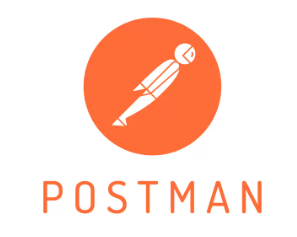Introduction
Today, in the fast-moving software development world, ensuring the quality and reliability of applications is more important than ever before. In this process, software testing is instrumental and test automation has emerged as a strong tool to improve efficiency and reliability. This ultimate guide intends to provide an introductory knowledge of test automation tools to beginners by examining their benefits, types, and best practices for implementation.

Table of Content
- Understanding Test Automation
- Types of Test Automation Tools
- Popular Test Automation Tools and Their Features
- Choosing the Right Test Automation Tool
- Best Practices for Implementing Test Automation
- Future Trends in Test Automation
- Conclusion
- FAQs
Understanding Test Automation
Test automation entails employing computer programs that can run pre-written tests on an application before it gets released into production mode. The approach enables quick and efficient identification of defects compared to manual testing.
Key Benefits of Test Automation
Increased Efficiency and Speed: Automation vastly reduces the time consumed in executing repetitive test cases.
Improved Accuracy and Consistency: This eliminates human errors from automated tests resulting in more dependable results.
Cost Effectiveness in the Long Run: Automated testing reduces the overall amount of effort put into testing but its initial set-up requires high expenditure.
Common Challenges and How to Overcome Them
High Initial Setup Costs: Mitigate by gradually integrating automation into the testing process.
Maintenance Overhead: Regularly update test scripts to reflect application changes.
Skill Requirements: Invest in training and upskilling the testing team.
Types of Test Automation Tools
Functional Testing Tools
They confirm that the application functions correctly. One of them is Selenium and QTP/UFT.
Performance Testing Tools
These tools are used to test the performance of an application under different situations. JMeter is a good example.
Security Testing Tools
Tools such as OWASP ZAP, identify security vulnerabilities in your app.
Compatibility Testing Tools
Used to make sure that the application works on different environments, like BrowserStack.
Unit Testing Tools
These tools are used for testing individual components in the code, with JUnit being one of them.
Popular Test Automation Tools and Their Features

Overview: This looks into a widely used open-source tool for web application testing.
Key Features: It allows multiple programming languages and browsers to be used.
Use Cases: Perfect for cross-browser testing and integration with CI/CD pipelines.
QTP/UFT (Quick Test Professional/Unified Functional Testing)

Overview: This is commercial software by Micro Focus that is used for functional and regression testing.
Key Features: It can work using keywords as well as scripts, it works with ALM too.
Use Cases: Good when it comes to complex and enterprise-level applications.

Overview: Appium is one of the most popular tools in mobile app testing which falls under the category of open-source software.
Key Features: Compatible with iOS and Android devices, adopts WebDriver protocol.
Use Cases: It is highly recommended for mobile app test automation purposes because it automates mobile app tests effectively making them easier to write, run, and maintain through its capability of directly running Selenium-based test scripts on mobile devices such as phones or tablets without any modification required.

Overview – this talks about an open-source performance testing tool called JMeter.
Key Features
i. Simulates heavy server/network/object load
ii. Open Source
iii. Supports different protocols
iv. Performance monitoring
v. Highly Extensible
vi. Platform-independent
vii. Distributed Load Testing
viii. Cross-platform
IX. Reports etc..Use cases – include performance/load test services & Web Application Testing etc.

Overview – A large number of people use Postman as their tool for API testing nowadays.
Key features – include an Easy-to-use interface, support for writing automation scripts, and integration well with CI/CD.
Use cases – include functional & performance testing of APIs.

Overview – Cucumber is a tool for behavior-driven development (BDD).
Key features – uses Gherkin language to write test cases.
Choosing the Right Test Automation Tool

Factors to Think About
Project Requirements: Make sure that the tool is capable of meeting your project needs.
Budget and Resources: Consider how much it costs for the tool plus the resources at your disposal.
Integration with Existing Tools: Check whether the present tools and workflows can be used with it.
Skill Set of the Team: Select a tool that matches the team’s skills.
Comparing Tools Based on Criteria
Consider ease of use, scalability, community support, and documentation when evaluating testing tools.
Best Practices for Implementing Test Automation
Setting Clear Objectives and Goals
Define what you want to achieve through test automation so that you can maintain its focus and measure progress.
Creating Maintainable and Reusable Test Scripts
Develop scripts that are modular enough to reduce maintenance workloads.
Integrating Test Automation into the CI/CD Pipeline
Automate tests to run as part of a continuous integration delivery process for immediate feedback.
Regularly Reviewing and Updating Test Cases
Keep up with changes in the application by updating test cases regularly.
Training and Upskilling the Testing Team
The team must be aware of how these tools work and their respective best practices.
Future Trends in Test Automation
AI and Machine Learning in Test Automation
Creating smarter and more adaptive test cases using AI.
Increasing Importance of DevOps and Continuous Testing
Integrating testing into the heart of the DevOps process for continuous quality assurance.
The Rise of Codeless Automation Tools
Tools have come up that require little coding, making automation possible for non-developers as well.
Trends in Test Automation Frameworks and Tools
Watch out for changing frameworks and tools to keep updated.
Conclusion
Test automation tools are essential in ensuring software quality and reliability. A thorough understanding of their types, benefits, and best practices will significantly supplement your testing strategy. Continuously update yourself with latest trends and develop skills as well as knowledge in this ever-changing profession.
FAQ's
What is the best test automation tool for beginners?
Selenium is often recommended because it is widely used and fully supported by a large community.
Can test automation replace manual testing entirely?
No, both types complement each other based on their inherent strengths.
How do I choose the right test automation tool for my project?
Look at your project needs, budget constraints, team capabilities, and integration requirements for a suitable fit.
What skills are needed for test automation?
Knowledge of programming languages, understanding of testing principles, and familiarity with automation tools.
How often should I update my automated test cases?
Regularly, especially after any significant changes in the application.















